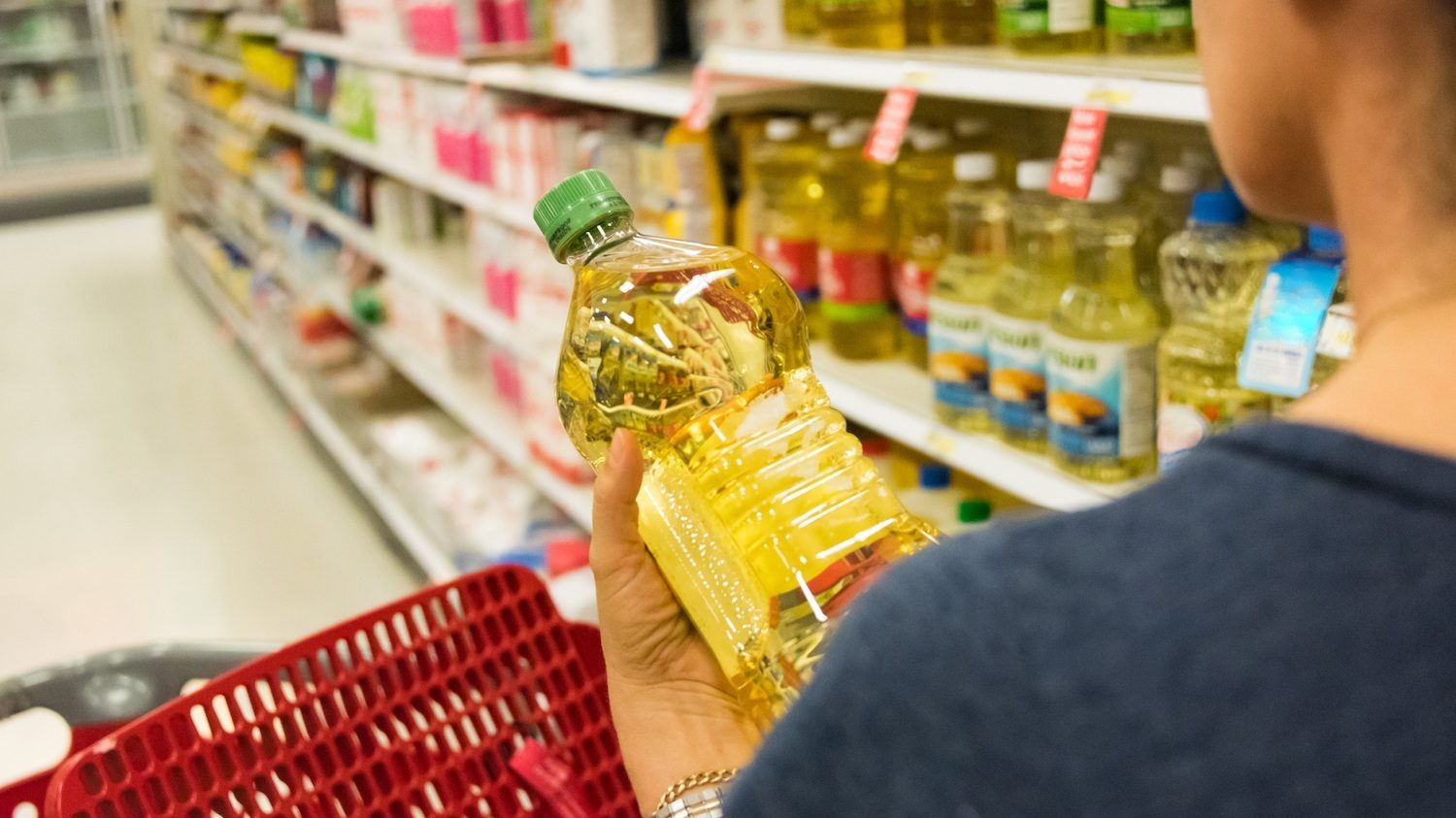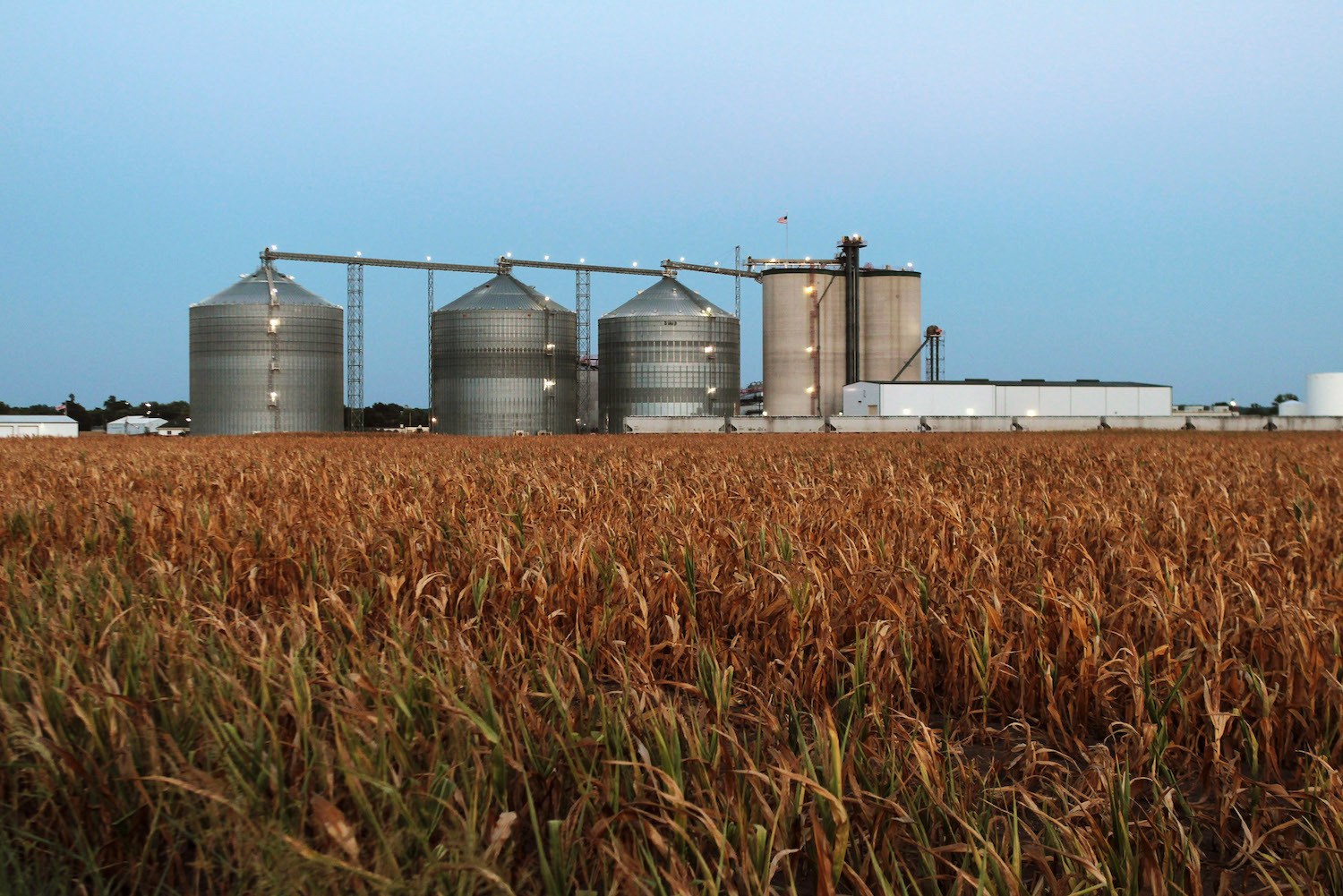
iStock/ Juanmonino
Cooking oil prices have nearly tripled since 2020, heating up the conversation around how we use our finite supply of soy and corn.
Brittany Melenchuk knows that griping about how much she’s paying for soybean cooking oil won’t help ease her costs. But with commodity prices sitting stubbornly at nosebleed-inducing highs, what else can she do?
“The price is staggering and it’s not showing any sign of coming down at all,” said Melenchuk, head chef and kitchen manager of Steny’s Tavern and Grill in Milwaukee, Wisconsin. “Unfortunately, it’s something we need.”
A quick look at the numbers and her frustration tracks: The price for her soybean cooking oil has more than doubled since pre-pandemic times, from roughly $17 for a 35-pound jug in early 2020 to $37.58 earlier this month. Melenchuk’s kitchen goes through more than 30 jugs a week to keep its six fryers hissing and bubbling while they brown bar menu staples like onion rings, chicken wings, and cheese curds.
Restaurants across the board have felt the squeeze of wholesale food costs shooting up 15.1 percent from February 2021 to February 2022, according to the Bureau of Labor Statistics (BLS). And vegetable oils, used for everything from frying rice to emulsifying salad vinaigrettes to baking moist brownies, have been among the leaders, with the fats and oils category swelling 44.2 percent over the past 12 years, outpacing wheat flour (29.1 percent), processed poultry (26.5 percent) and beef (22.8 percent).

Fried fish at Steny’s Tavern in Milwaukee, Wisconsin. Brittany Melenchuk, head chef and kitchen manager, is dealing with the rising costs of soybean cooking oil by purchasing a filter.
Prices for soybean oil—which, according to the Department of Agriculture (USDA), was the most widely consumed edible oil in the United States last year—have roughly tripled in the past two years. While commodity analysts, agricultural economists, and trade organizations all agree that the most recent spikes in edible oil costs are directly tied to Russia invading Ukraine, there may be a more enduring factor behind these record-high prices—specifically, the escalating use of commodities like soybean oil not for food purposes, but rather in the production of greener, renewable fuel.
“We can resolve weather problems, and we can resolve the Ukrainian situation,” said Bill Lapp, president of the commodity price consulting firm Advanced Economic Solutions, “and we still would be faced with a food-versus-fuel debate with regard to vegoil supplies, and trying to burn our food.”
Vegetable oil prices have dogged food processors and restaurants like Steny’s over the past two years, driven higher and higher by a perfect storm of conditions—Russia’s invasion of Ukraine cutting off major global exports of commodities like sunflower oil, the continued fallout from Covid-19 supply chain disruptions and labor shortages, and volatile weather conditions across the globe affecting soybean, canola, and palm oil production, among other factors. Yet underpinning these escalating costs are U.S. federal and state policies that, since the advent of the Renewable Fuel Standard (RFS) in 2005, have mandated and encouraged biofuel production like renewable diesel. The Biden administration has championed the RFS as it seeks to address climate change and develop fossil-fuel alternatives. And lately, that has meant it’s not just bakers and chefs like Melenchuk treating soybean oil like “liquid gold.”
It’s true: The renewable fuel boom is boosting industrial demand for vegetable oils at the same time that prices for cooking oils are soaring.
These myriad government policies have been a boon to farmers, who appreciate commanding higher prices for the corn and soy they grow for biofuel production. Energy companies are also cashing in on RFS and other renewable fuel policy incentives like California’s low-carbon fuel standard (LCFS), as they start to manufacture—or ramp up production of—renewable diesel, a biofuel made with plant materials and animal byproducts that emits less carbon emissions than petroleum-based diesel. Animal tallow and used cooking oil can be used to produce renewable diesel, but the same soybean oil bottled and displayed on grocery store shelves is also used as source.
It’s true: The renewable fuel boom is boosting industrial demand for vegetable oils at the same time that prices for cooking oils are soaring. But is that boom turning up the heat on Melenchuk’s fryer oil prices? In interviews with The Counter, agricultural economists and analysts suggested that the renewable diesel industry’s ever-expanding appetite for various fats and oils is indeed ratcheting up competition for vegetable oil, particularly soy in the United States. That increased demand threatens food processors’ supplies while also raising their costs. And when suppliers face higher costs, those of us closer to the dinner table typically do, too.
A 2021 report published by the U.S. Energy Information Administration (EIA) estimated that renewable diesel production capacity would more than quadruple by 2024. But some analysts predict that the expected supply of raw materials like animal tallow and used cooking oil won’t be enough to meet production demands, leaving soybean oil—and, likely in the near future, other vegetable oils—to do the heavy lifting of filling in the gap in available feedstocks, or the raw materials used to produce the biofuel. That’s fine in theory: vegetable oils are substitutable goods, meaning that if prices for soybean oil suddenly shoot up or if there is a shortage, it can easily be swapped with other vegetable oils like canola or sunflower. But shutting down or tightening a pipeline for one type of oil, as has been the case with Russia and Ukraine, which export 75 percent of the world’s sunflower oil, will not only crank up the pressure on whatever supply is still available, but will also shoot up demand for similarly substitutable goods. In other words, increased demand for various substitutable edible oils is simultaneously driving up prices for all of them.
Food consumption for soybean oil over the past 10 years has risen only 5 percent, compared to a whopping 126 percent growth in industrial use.
That brings us back to soybean oil. “It’s the industrial demand that’s certainly the growing [use],” said Will Osnato, a senior research analyst at the agriculture data firm Gro-Intelligence, adding that food consumption for soybean oil over the past 10 years has risen only 5 percent, compared to a whopping 126 percent growth in industrial use. Commodity analysts say they are worried that domestic soybean oil demand may outpace supply in the near future, which could mean we’ll face an impossible choice between cheaper food costs and greener energy—and not just in years of great global unrest.
This industrial demand surge in the United States can be traced back at least 17 years, to the creation of the RFS. First established by Congress as part of the Energy Policy Act of 2005 and expanded in 2007 through the Energy Independence and Security Act, the program sought to boost renewable fuel production while reducing both greenhouse gas emissions and the nation’s dependence on foreign oil. Following the expansion, RFS required that a minimum amount of renewable fuel be blended into the overall fuel supply, with the total level rising each year to reach a targeted goal of 36 billion gallons in 2022. (The nation is currently on track to produce far below that historic goal.)
This industrial demand surge in the United States can be traced back at least 17 years, to the creation of the Renewable Fuel Standard.
Over the past 15 years, much of the fuel requirement has been fulfilled by corn ethanol, which currently makes up roughly 10 percent of the nation’s motor fuel supply. But RFS stipulated that as the mandated level of renewable fuel production increased, so too would the proportion of renewable fuels be composed of “advanced biofuels,” which are defined as any renewable fuel besides corn-based ethanol that provide comparably low fuel emission rates. But because advanced biofuels are expensive to produce compared to petroleum diesel, federal and state governments have enacted additional policies that provide subsidies and incentives to make their manufacturing commercially viable.
These incentives have attracted droves of energy companies to the production of renewable diesel, looking to reap the benefits. In the past three years alone, Marathon Petroleum Corp., CVR Energy, HollyFrontier, and Phillips 66 have all announced plans to convert oil refineries for renewable diesel production with soybean oil as one of the feedstocks. This past July, EIA reported that if all renewable diesel projects that had been announced or were in development were to come online, domestic production capacity would increase to over 5 billion gallons in 2024, up from just short of 0.6 billion gallons in 2020.
But not all incentives were created equal, and one in particular has been seen by the agriculture and energy industries as chiefly responsible for the green diesel rush. “Why are all these renewable diesel plants being built?” asked Scott Irwin, an agricultural economist at the University of Illinois Urbana-Champaign. “A straightforward explanation is it’s California.”
In 2011, the state first implemented its low-carbon fuel standard, which requires a steady, yearly decrease of the carbon intensity (CI) of transportation fuels sold in the state. Irwin explained, however, that it’s not the LCFS alone that is driving so many large multinational energy companies to set up renewable diesel production sites. “They are betting that basically renewable diesel and sustainable aviation fuel, which is very closely related, will have a major role to play in any climate mitigation policies,” Irwin said. “In essence, they’re betting that the LCFS will spread state by state across the United States.”
You don’t have to look far to find confirmation of Irwin’s assessment. Oregon and Washington have both passed laws enacting their own low-carbon or clean fuel standards, while New York, Colorado, and Minnesota are exploring enacting their own standards. Biofuel companies and their trade representatives are also pushing for a national low-carbon fuel standard.
But the looming concern among agriculture and energy analysts remains: whether current and future feedstock supplies will be able to keep up with refineries’ demand. While the ideal raw materials for this outgrowth of renewable diesel facilities are used cooking oil, tallow, and corn oil byproducts, the available supply for these feedstocks is quite limited compared to expected production capacity. Energy companies are therefore expecting soybean oil—currently the only vegetable oil accepted under the RFS for transportation biofuel production—to fill the renewable diesel production gap in the meantime. According to Irwin, this has led to the spike in domestic demand for soybean oil while contributing significantly to the record-high prices we see today.
“We’re essentially paying taxpayer dollars to a product that is raising the prices of vegetable oil for consumers.”
“Before the renewable diesel boom hit, soybean oil prices were about 30 cents [per pound], and I’d say the renewable diesel boom has doubled them,” Irwin said, adding that other global issues like droughts and the ongoing conflict in Ukraine added an extra 20 cents per pound by mid-March.
Some food industry groups pin higher prices to proposed updates to the RFS mandates for 2022, which will increase mandated biofuel use this year to a historic high of 20.77 billion gallons. Last year, in an odd moment of unity between the bread and oil industries, the American Bakers Association (ABA) vociferously opposed the Environmental Protection Agency’s (EPA) proposed updates. The ABA warned that its processors were already struggling with tight supplies, which could translate to product shortages and price hikes for consumers.
Earlier this month, Reuters reported that the Biden administration has considered waiving biofuel blending quotas for refiners in an effort to free up soy and corn supplies for cooking and fend off consumer inflation. According to BLS, between February 2021 and February 2022, the fats and oils component of the Consumer Price Index for urban consumers, which includes butter and peanut butter in its makeup, increased 11.7 percent, compared to 7.9 percent for all foods.
Joe Glauber, senior research fellow at the International Food Policy Research Institute, said that government incentives like the dollar-per-gallon federal tax credit enjoyed by biodiesel producers and importers means that consumers end up paying twice.
“We’re essentially paying taxpayer dollars to a product that is raising the prices of vegetable oil for consumers,” Glauber said. “From a policy standpoint, if the concern is about food inflation, I think the administration should think very, very much about suspending the Renewable Fuel Standard.”
“This happens year after year after year, as long as we continue the kinds of policies that are incentivizing the use of vegetable oils in renewable diesel.”
Others, however, are skeptical about how much of an impact soaring vegetable oil prices are actually having on household expenditures. John Jansen, vice president of strategic partnerships at the United Soybean Board, which represents roughly half-a-million soybean farmers, said that food conglomerates like Kellogg Company and General Mills have already locked in manageable prices for their supply of vegetable oils through the futures market, which promises ownership at a later date. But, he added, many small- and mid-sized bakeries and companies that are relying on the spot market for their edible oils, which has seen drastic acceleration over the past two years, are going to feel the pain of these exorbitant costs.
Irwin noted that factors like transportation fuel and labor costs are more likely to have a noticeable impact on grocery store bills than even a 100-percent price increase in a commodity like soybean oil. But he did caution that vegetable oils are used in small amounts in just about everything—from bread to oat milk to corn chips. By incentivizing a new industrial use for these commodities, he said, it’s likely that there will be a “small and persistent impact on retail prices” in the long-run.
“It’s not like a one-time shock like we’re going through now with the Ukrainian crisis—at some point, that will end and we will go back,” Irwin said. “This happens year after year after year, as long as we continue the kinds of policies that are incentivizing the use of vegetable oils in renewable diesel.” Jansen of the United Soybean Board, however, said that as new facilities that crush soybeans into oil and meal are being constructed alongside new renewable diesel refineries in the next two to three years, they expect domestic soybean oil production will be better equipped to meet increasing demand. This, according to Jansen, will help balance out the vegetable oils market. But he said that for food processors looking to avoid high prices for soybean oil, “until then, it’s going to be difficult.”

A soybean oil plant in Indiana, Pennsylvania. Industrial use of soybean oil has grown 126 percent over the past 10 years.
Edwin Remsburg/VW Pics via Getty Images
Whether or not increased renewable diesel production affects overall consumer food costs, there is another worry underlying the renewable diesel surge: increased reliance on vegetable oil feedstocks for use in “green” energy initiatives could ultimately have net negative impacts on the environment. A February study published in the Proceedings of the National Academy of Sciences, which covered eight years following the expansion of the RFS in 2007, found that rather than mitigating carbon emissions that stem from transportation, ethanol mandates had in fact increased net carbon emissions.
Much of the increase is due to a phenomenon known as land-use change. The RFS mandate drove up the price for corn, which then incentivized U.S. farmers to clear forests and grasslands that act as carbon sinks for agricultural use. Together with increased fertilizer use and water pollution, corn-based ethanol produced to meet the RFS has a carbon intensity that could be at least 24 percent higher than gasoline, the study’s authors estimated.
“These tradeoffs must be weighed alongside the benefits of biofuels as decision-makers consider the future of renewable energy policies and the potential for fuels like corn ethanol to meet climate mitigation goals,” the study’s authors wrote.
The RFS mandate drove up the price for corn, which then incentivized U.S. farmers to clear forests and grasslands that act as carbon sinks for agricultural use.
Jeremy Martin, director of fuels policy for the Union of Concerned Scientists, sees parallels between the environmental issues that plagued corn ethanol and what could unfold as demand for vegetable oil continues to grow.
“It’s shaping up to be a sequel on the soybean side, but intensifying,” Martin said.
Mac Marshall, vice president of market intelligence from the United Soybean Board and U.S. Soybean Export Council, said in a statement that there are physical constraints on the total land acreage that crops like corn and soybeans can be grown, and that the land most optimal for soybean cultivation is already being farmed. This means that any land that farmers would expand to for further crop production would be marginally productive at best, which combined with rising input costs like fertilizer and fuel is likely to disincentivize expansion. “Ultimately, farmers balance agronomic and economic factors when making planting decisions,” Marshall said.
Returning then to the question we started with: Is there a connection between chef Melenchuk’s higher fryer oil prices and the renewable diesel boom? Well, yes, however indirect. But there’s a bigger, more existential question prompted by this surge in demand and prices, and it may mean that we do have to make an impossible choice between affordable food and greener fuel—and far sooner than we’d like.
“The issues causing tightness in the vegetable oil markets aren’t all caused by renewable diesel by any means, but this doesn’t seem like the time to demand tens of millions of pounds of more vegetable oil,” Martin said. “Looking at the comparisons with corn ethanol, this looks like a bad idea, bad timing, and ignoring those lessons is gonna do long term harm for the [industry’s] prospects.”






